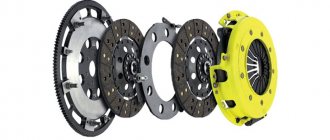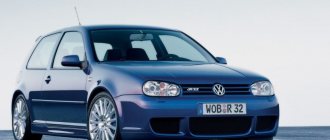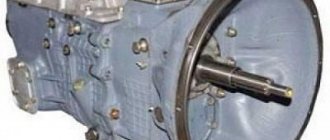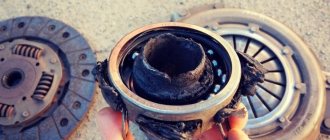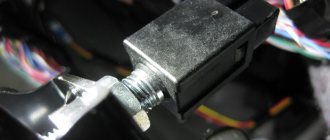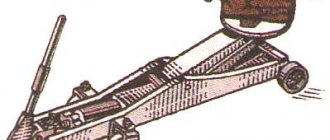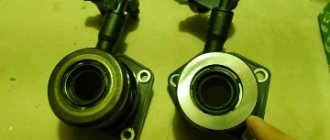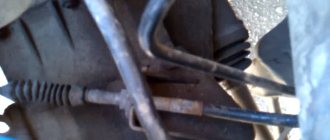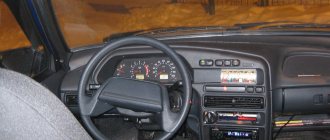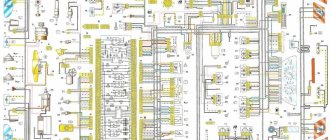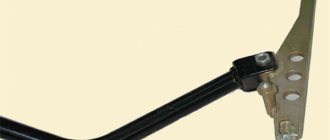For many modern car enthusiasts, the concept of double squeezing seems long forgotten. Experts still agree that you should not forget about this method. This is especially true when using manual transmissions. The use of this method is best considered before the advent of synchronizers.
In any case, any driver needs to know this as the basis of everything. Of course, this is not required for current generation technology, but anything can happen. With the help of such devices, speeds are equalized at different rotations of the shafts. Thus preventing the gears from locking. Only synchronizers were not introduced immediately. Initially, when changing gears, they used double squeezing or re-throttle. The use of the first technique is necessary to increase speeds, the task of the second is to reduce it.
Briefly about re-gasping and double squeezing
These procedures are necessary in cars with pedals without a gearbox equipped with synchronizers. It is worth noting the fact that they were not previously placed on boxes. Only after some time, with the advent of engineering developments and speculation that the machine should, in addition to being useful, also have ease of operation. This is how synchronizers entered the lives of motorists.
Riding in extreme conditions
Driving with slippage truly “kills” the clutch, which often happens in unforeseen, extraordinary conditions. When we happen to get out of a puddle or a snowdrift, we are forced to speed up the engine, giving it high speeds and sharply engage the clutch.
In this situation, not only the linings on the disk burn fatally. Such harsh operating conditions also threaten more serious damage, including to other vehicle components. Therefore, if possible, ask to be taken in tow. Don't burn the clutch.
Purpose of double squeeze
Mechanisms such as synchronizers facilitate the process of gear shifting, making it smooth. At the same time, wear is reduced and the specific grinding noise characteristic of older models is also eliminated. If there are no synchronizers or they are broken, you cannot do without double squeezing.
So why is it really needed? The need is due to the equalization of engine speed by gears and shafts. Otherwise, these parts may jam at best. In practice, this happens as follows: moving at first speed, the engine speed is increased to three thousand revolutions. To switch to second, you need to release the gas, squeeze the clutch, go to neutral. Then wait until the speed drops and press the clutch again, switch to second. In this way, the shafts are equalized without damaging the gearbox. Then you can move on calmly.
In the case of re-gassing, the process is a reverse action. This implies reducing the gear without putting the gearbox to sleep. If you need to turn on the road, but it is impossible to do this in fourth gear, you must slow down and lower the gear. Otherwise, there is a risk of stalling. You can smoothly release the gas by squeezing the clutch and move to neutral. The next action will be to gain momentum. To do this, you will have to activate the gas pedal, in other words, make a shift. That's it, after that we managed to increase the speed. Synchronization with the shaft has occurred. You can now downshift and continue driving.
It is recommended to adhere to the throttle pause at neutral during the process. The main thing here is to catch the right clutch moment in time to prevent the car from stopping. Skills come with experience, of course. Therefore, there are no special skills or secrets here.
The question arises: why is this necessary when modern cars are equipped with synchronizers? If you remember that often the road is not perfectly smooth, there are always some obstacles.
Therefore, synchronizers may fail on the first bump or climb. This is where re-gassing comes to the rescue. For example, when going up, you realize that this transmission cannot pull you through. There are simply not enough revolutions, the throttle is overloaded. This allows you to switch to a lower gear without losing the necessary inertia.
Text about re-gas.
Peeling is a technique used when changing gears on a manual transmission from higher to lower (for example, from 3rd to 2nd). There are re-gassing with and without double squeezing. Revving without double squeezing is spinning up the engine by applying gas while the clutch is depressed to achieve speeds corresponding to the current speed of the car and the selected gear. Re-gearing with double squeezing - simultaneous spinning of both the engine and the intermediate shaft of the manual transmission.
Both types of throttle change are often combined with braking. In this case, press the brake pedal with the toe and press the gas pedal with the heel. The corresponding technique is called heel-toe braking.
Technique for performing throttling without double squeezing.
1) when shifting to a lower gear, I do not immediately, but with a short delay, release the gas pedal (i.e., I do not press the clutch and release the gas at the same time, as they teach in driving school, but with a slightly delayed release of the gas);
2) with a short, measured press of the gas, I bring the revolutions up to the appropriate ones (“the appropriate revolutions” are those at which, if you sharply release the clutch pedal, nothing will happen, i.e. there will be no jerk;
3) I switch with the gas pedal fully depressed; the speed of pressing and releasing the clutch must be such that during the time the clutch is disengaged, the engine “spins up” to the “corresponding speed”; such a press is more like a soft short blow on the pedal.
Double-squeeze technique. %%%%%%%%%%%%%%%%%%
Re-gearing without double squeezing is very useful in order to avoid the characteristic jerk when shifting down gears. This jerk appears due to the fact that the same speed of the car in different gears corresponds to different engine speeds. This means that when going down, the engine must spin up, and if this is not done by pressing the gas pedal, then it will spin up due to the forward movement of the car immediately after releasing the clutch.
A jerk when shifting down is undesirable both because it is unpleasant for passengers, damages the car, and because in many conditions it worsens the car's handling. For example, on a slippery surface, a jerk can lead to the drive axle breaking off.
About engine braking
There is a point that drivers should be aware of. Engine braking is necessary in case of brake failure. Also in case of heavy ice, steep descent. The ability to brake with the engine in such situations saves. While driving, if you feel that the brakes cannot cope, you need to switch to a lower gear, thereby increasing the speed. This will cause a drop in transmission speed. The car will slow down smoothly.
Then, in a similar way, you should switch until the threat disappears. You will be able to stop using the brakes or continue driving. Only this applies to mechanics. If it is automatic, you will have to overload the box, gradually reducing the speed. After waiting for the 90 km/h mark, you can transfer the car to second, again wait for the drop to fifty. Then you need to switch to low. This is not difficult due to modern machine designs. They can adapt to a specific driving style. Even if you let off the gas, the gear reduction will be carried out automatically, despite the lack of revolutions.
It is recommended not to neglect re-throttle, which can reduce the load on the synchronizers, ensuring that the traction force is maintained when switching to low gears.
How to get moving correctly
So, your engine is started and running in neutral. You depress the clutch pedal and engage first gear. Now you need to smoothly connect the crankshaft to the gearbox. This means that you need to press the driven disk against the flywheel rotating at a speed of 20-25 revolutions per second. To prevent the car from “jumping” and the engine suddenly stalling, we will perform this operation in three stages.
- Stage 1. Release the clutch pedal slightly. The pressure plate springs will bring the driven disk into light contact with the flywheel - your car will move and slowly begin to crawl.
- Stage 2. Hold the pedal in this position for two to three seconds. The rotation speeds of the flywheel and disk are gradually equalized - your car accelerates.
- Stage 3. The car drives confidently on the road - the torque is 100% transmitted to the gearbox. Release the pedal and remove your foot from it. A further half-engaged state of the clutch will burn the discs .
At the traffic light
According to numerous testimonies of novice drivers, some driving instructors teach to wait for a green traffic light with the clutch depressed and first gear engaged. It would seem that the discs do not touch, there is no threat of the linings burning. But in this case, the release bearing wears out. In the end, this negatively affects the engine in general. Therefore, put it in neutral and release the clutch pedal.
In a traffic jam
Perhaps the greatest threat to traction comes from driving in traffic jams. Some drivers do not take their foot off the clutch pedal for a long time, turning it on and off, leaving the engine in first gear.
Article on the topic: What is a kit car, or how to assemble a car with your own hands
The driven disk almost constantly rubs against the flywheel disk, and asynchronously. As a result, additional heating occurs, which contributes to more intense abrasion.
Try to move in traffic jams, covering short distances in stages, turning off the gear in between and releasing the clutch.
On the descent
On steep descents, you cannot turn off the gear. It is recommended to descend at first speed with braking using the foot brake, and be prepared, as a last resort, to use the hand brake. There is no need to use the clutch pedal. Moreover, it may pose a risk of engine stalling.
Car clutch device
The operation of the car’s clutch is ensured by the following parts:
- flywheel;
- fork;
- pressure disk;
- spring (can be push or pull type);
- release bearing and clutch;
- driven disk;
- drive elements.
The flywheel is responsible for transmitting torque to the gearbox. It is mounted on the crankshaft of the engine. The pressure plate, or as it is also called the “basket,” is an element rigidly fixed on the flywheel, to which the springs of the driven disk are attached.
The pressure and driven disks in connection with the flywheel are responsible for the smooth distribution of torque from the engine to the manual transmission. The parts are in close contact with each other or move away from each other, depending on the pedal press inside the car.
The push clutch performs the main function: it smoothly disconnects during braking and connects the engine and gearbox when starting. At the same time, it compensates for the load and minimizes the vibration impact from the engine, thereby partially unloading the elements of the engine, vehicle transmission and clutch unit.
The release bearing protects the clutch from wear. When you press the pedal, the fork separates the pressure and driven discs. The remaining components of the clutch drive are cables, hydraulic cylinders, tubes and the pedal itself.
A few words about high-speed gas transfer...
High-speed throttling, when the clutch slips and a downshift occurs, or rather its engagement, but in an impact way, is used in those extreme situations when there is no time to perform actions.
This re-gasification is performed as follows. As soon as the engine begins to lose speed (although it is better to start the procedure even before that), slowly disengage the clutch with a slight delay, while keeping the throttle open. This gives the engine the opportunity to quickly increase speed. It is at this moment that you need to shift to a lower gear and press the clutch. It must be said that the delay in disengaging the clutch causes it to slip and increases the rotation speed in a short period of time, and to any level.
Clutch slip when in constant gear is used to increase power when there is no time to downshift. This method can be used when overcoming a steep climb (its top), an area with dirty and loose soil, and when driving in the snow. Incomplete disengagement and engagement of the clutch gives an additional 300-600 revolutions, which speeds up the vehicle.
Note that all of the above methods have a fairly wide range of applications, both in critical road situations and in standard ones. They allow you to increase the controllability and stability of the car thanks to the anti-lock effect during emergency braking. In addition, these techniques are designed to generate reliable engine thrust, which reduces the severity of critical situations.
Video material on how to re-throttle and select speed:
Good luck and peace of mind on the roads!
The article uses an image from the site www.kakprosto.ru
There are many types of over-gassing. Its initial use was due to the lack of synchronizers in the variable gearbox, which precluded their smooth activation. Today, throttling is used for a smoother change in engine speed when downshifting at high speed. In cases of deceleration, a large load is placed on the engine and gearbox, which can have a detrimental effect on performance.

